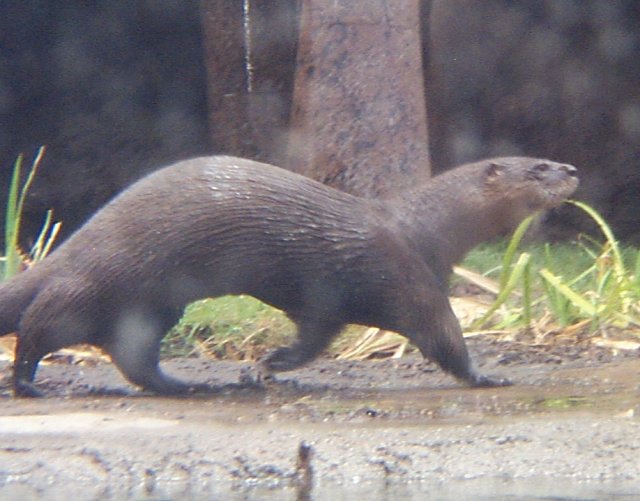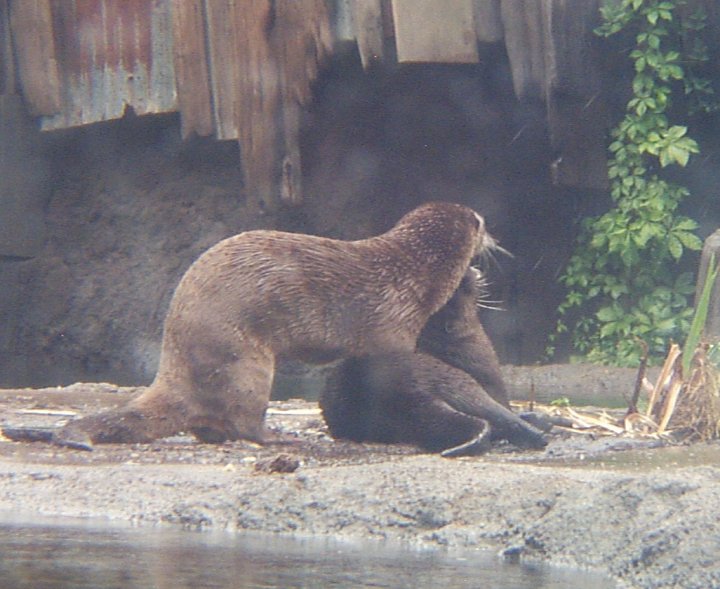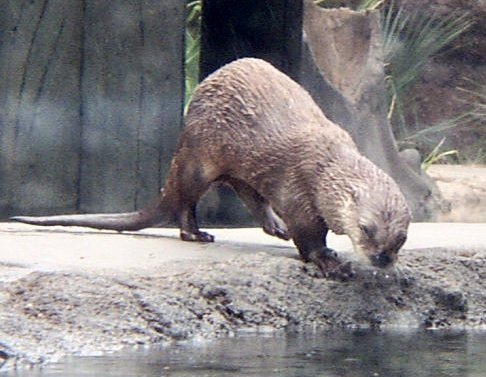
Lutra canadensis
River Otter are commonly found in all major waterways of the United States and Canada. In the U.S. they stretch all the way from the NW to the SE.
They need a lot of space to meet their needs, therefore their homerange varies depending on their age, sex, and resource availablity. Common habitats include rivers, lakes, streams, and salt and fresh-water marshes. They do not stay settled in one area for very long, but rather move from place to place.
The majority of their diet includes fish, although crayfish, frogs, turtles, some birds, rodents and even rabbits are consumed when fish is scarce.
River otters have very few predators and most of the mortality among them is due to human intervention. They are very clumsy animals and are easily trapped by things such as trees, bushes or weeds. This "accidental trapping" is also a major cause of death.
They are located in the Texas Wild section at the Fort Worth Zoo.
The River Otter is the largest member of the Mustelidae family with a body that is long and slender, whiskers, a very unique nose, and small ears. The upper part of the body is a dark brown and the underside is either gray or brown. The tail, which is flat on the bottom and thick at the base, is long, heavy, and furry. The adult otters are three to four feet long and weigh approximitaly thirty pounds.
They spend two-thirds of their time on land and the remaining time in the water, which usually includes hunting. They are very entertaining creatures doing things such as sliding down mud ravines, diving, and using pebbles and rocks as toys. They are also known to be very intelligent creatures.
They are almost resistant to cold because of an outer coat of hair and a dense, thick undercoat that helps to "water-proof" the animal. Their fur is the only thing that keeps them warm. "Perianal" scent glands are used for identification, defense, making territory and trail marking. Their small ears and nostrils can be closed when in the water due to muscles in the ears that cover them. This allows them to swim and dive excellently. When they dive their pulse is slowed down in order to conserve oxygen.

Female otters reach sexual maturity at the age of two, but do not usually become pregnant until they are three years old. The males also become sexually able at the age of two but they are not very successful breeders until they are at least five years old. Otters are very peaceful for the majority of the year, but during the breeding season fights often occur between competing males. Although litters of up to six progeny have occurred, litters of two-three are the most common.
There are two river otters at the Fort Worth Zoo located in the Texas Wild section. They are enclosed within glass walls and they have a rock slate that leads into a small pond with plenty of roaming space. One fact that was noted on their information display was that they can swim seven mph and they can move at eighteen mph on land.

Rebecca Lamont imitator06@yahoo.com
Mary Ann Clark mac@whozoo.org
Sources and Links:
River Otter at the Oakland Zoo:
http://www.oaklandzoo.org/atoz/azotter.html
River Otter (Nebraska Wildlife):
http://www.ngpc.state.ne.us/wildlife/otters.asp
Fort Worth Zoo
Wild Animals of North America. National Geographic
Society. Washington D.C. 1998.
Beavers and Other Pond Dwellers. Wild, Wild World of
Animals. Time-Life Films. 1977.